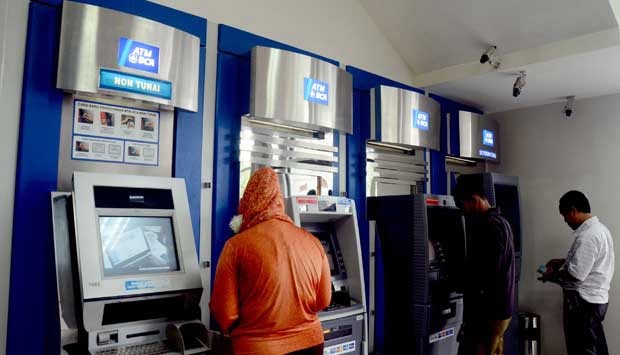Cyber security has become an increasingly important topic in recent years, with the rise of digital technologies and the increased dependence on the internet for our daily lives. It is crucial to protect ourselves and our online activities from potential threats, such as hackers, cyber criminals, and other malicious actors. In this article, we will discuss some essential tips and tricks for protecting yourself from cyber threats while using various digital platforms and technologies.
Cara Mengunci WA Paling Mudah, Cocok untuk Semua Tipe HP
WhatsApp is one of the most popular messaging apps in the world, with over 2 billion active users. However, it is also a platform that is vulnerable to various cyber threats, such as hacking, malware attacks, and phishing scams. One way to protect yourself from these threats is by setting up a password or PIN on your WhatsApp account, which can prevent unauthorized access to your messages and personal information.
The process of setting up a password or PIN on WhatsApp is straightforward and can be done in a few simple steps. Here’s how:
- Open WhatsApp and go to “Settings.”
- Tap on “Account” and then select “Privacy.”
- Scroll down and look for the “Security” section.
- Tap on “Fingerprint lock” or “PIN.”
- Set up your preferred password or PIN and confirm it.
- You can also choose to enable your phone’s biometric authentication, such as fingerprint or facial recognition, for added security.
Once you have set up your password or PIN on WhatsApp, you can rest assured that your messages and other sensitive information are protected. It is also essential to be vigilant and not share your password with anyone, especially with strangers or untrusted sources. By taking these simple steps, you can enjoy using WhatsApp without worrying about potential cyber threats.
Cara Cyber Security Indonesia Lawan Hacker Mobile Banking – IDS Digital
Mobile banking has become a popular way of managing our finances, offering easy and convenient access to our accounts and transactions. However, it also comes with various risks, such as fraud, account takeover, and identity theft. It is crucial to protect ourselves and our mobile banking activities from these threats by implementing proper security measures.
The following are some essential tips that can help you protect yourself while using mobile banking:
- Use a strong and unique password for your mobile banking app or website.
- Enable two-factor authentication, which adds an extra layer of security to your account.
- Avoid accessing your mobile banking app or website over public Wi-Fi or unsecured networks.
- Be careful with phishing emails or messages that may try to trick you into divulging your account information.
- Regularly monitor your account for any suspicious activities or transactions and report them immediately.
It is also crucial to keep your mobile banking app or website up-to-date with the latest security patches and updates, as these can address any vulnerabilities or weaknesses in the system. By following these tips and being vigilant while using mobile banking, you can ensure the safety and security of your finances and personal information.
Begini Cara Polisi Ungkap Kasus Pembobolan Brankas di Lubuk Baja, Sosok
Physical security is also an essential aspect of overall security, especially when it comes to protecting our valuables and assets. In the case of bank vaults or safes, it is crucial to ensure that they are adequately secured and protected from potential theft or burglary.
The following are some tips for securing your bank vault or safe:
- Choose a high-quality, tamper-resistant vault or safe that meets industry standards.
- Install the vault or safe in a secure location, such as a basement or a specially designed vault room.
- Implement robust access controls, such as biometric authentication or keypad entry, to ensure that only authorized individuals can access the vault or safe.
- Regularly inspect and maintain the vault or safe and its components, such as locks, hinges, and sealing mechanisms.
- Train and educate employees and other authorized individuals on proper security procedures and protocols for accessing and using the vault or safe.
By following these tips and best practices, you can protect your valuable assets from potential theft or burglary and ensure their safety and security.
Cara Menangani File RAR di Windows – Tips & Tutorial
File compression is a common practice to reduce the size of large files or folders, making them easier to store, share, or transfer. One of the most popular file compression formats is RAR, which is widely used by individuals and businesses to compress and archive their files.
If you are working with RAR files in Windows, there are some essential tips and tricks that you should know to optimize your workflow and ensure the safety and security of your files.
Here are some tips for handling RAR files in Windows:
- Use a trusted and reliable file compression software, such as WinRAR or 7-Zip, to compress or extract your RAR files.
- Avoid downloading or opening RAR files from untrusted sources or suspicious emails or messages.
- Enable your antivirus software to scan and check RAR files for viruses or malware before opening them.
- Use a strong and unique password to protect your RAR files, especially if they contain sensitive or confidential information.
- Regularly backup your RAR files to a secure and reliable storage device or cloud service to prevent data loss or corruption.
By following these tips and best practices, you can ensure the safety and security of your RAR files and optimize your file compression workflow.
Cara Mencegah Pembobolan ATM – ITGID | IT Governance Indonesia
ATMs are a crucial part of our daily lives, offering quick and convenient access to cash and other financial services. However, they are also vulnerable to various cyber threats and physical attacks, such as skimming, hacking, and vandalism. It is crucial to take proper measures to protect ourselves and our finances while using ATMs.
The following are some tips and best practices for using ATMs:
- Avoid using unfamiliar or suspicious ATMs, especially those that are located in isolated or poorly lit areas.
- Cover the keypad while entering your PIN to prevent shoulder surfing or hidden cameras from capturing your information.
- Regularly monitor your bank account and transaction history for any unusual activity or unauthorized charges.
- Be careful with your ATM card or cash, and keep them secure and hidden while using the machine.
- If you suspect that an ATM has been tampered with or compromised, report it to the authorities or your bank immediately.
It is also crucial to educate yourself on the latest cyber threats and physical attacks targeting ATMs and take necessary precautions to prevent them. By following these tips and best practices, you can ensure the safety and security of your finances while using ATMs.
FAQs
1. What is cyber security?
Cyber security refers to the practice of protecting computers, networks, and digital devices from potential cyber threats, such as hacking, malware attacks, and other malicious activities. It involves a range of technologies and practices, including antivirus software, firewalls, encryption, and access controls, among others. Cyber security is crucial in ensuring the privacy, integrity, and availability of digital information and services.
2. What are some common cyber threats?
Some common cyber threats include:
- Malware, such as viruses, Trojans, and ransomware, which can infect computers and steal sensitive information.
- Phishing, which involves tricking individuals into disclosing their personal information or account credentials through fake emails or websites.
- Hacking, which involves exploiting vulnerabilities in computers or networks to gain unauthorized access or control.
- Denial-of-service (DoS) attacks, which involve flooding a network or website with traffic to disrupt or disable it.
Video: Cyber Security Tips for Online Safety
In conclusion, cyber security is a crucial aspect of our digital lives, and it is essential to take proper measures to protect ourselves and our online activities from potential threats. By following the tips and best practices outlined in this article, you can ensure the safety and security of your digital information and devices. Remember to stay vigilant, educate yourself on the latest cyber threats, and take necessary precautions to prevent them.




